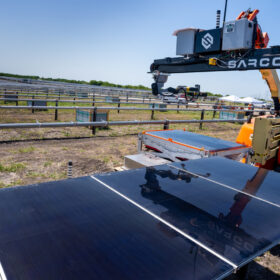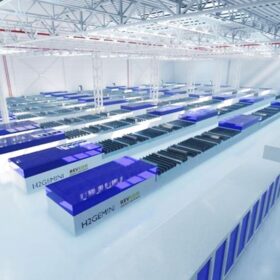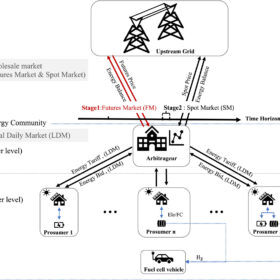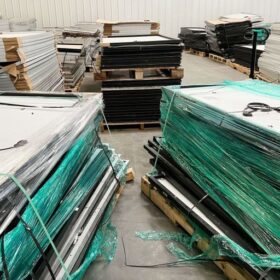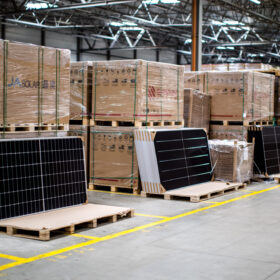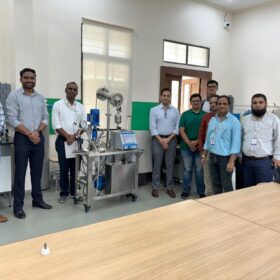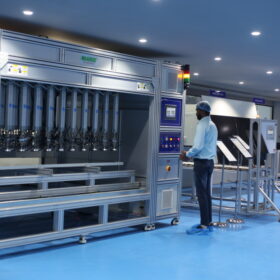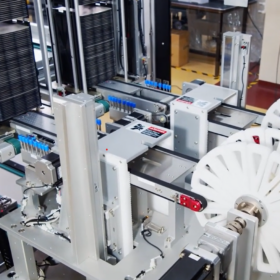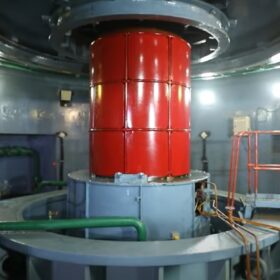German research institute unveils 99.74% efficient power electronics for solid-fuel heat pumps
Germany’s Fraunhofer Institute for Applied Solid State Physics (IAF) has developed an ultra-efficient circuit topology for voltage converters with an electrical efficiency of 99.74%. The tech could considerably raise the coefficient of performance for electrocaloric heat pumps and the scientists are now considering components based on semiconductor gallium nitride (GaN) for higher power density and efficiency.
Meyer Burger builds 2 GW solar cell factory in US
Meyer Burger plans to start a 2 GW cell factory in Colorado in the fourth quarter of this year.
Autonomous robots gaining traction with solar installers
Sarcos Robotics and Terabase Energy recently announced key business developments, underscoring how installation robots are increasingly moving from test centers to the field.
China solar module prices rebound
In a new weekly update for pv magazine, OPIS, a Dow Jones company, provides a quick look at the main price trends in the global PV industry.
Revkor, H2 Gemini unveil plan to build 20 GW HJT perovskite cell, module factory in U.S.
The two companies are targeting to reach an annual production capacity of 20 GW by the end of 2025. Manufacturing activities are scheduled to begin in the second quarter of next year.
Energy communities operating on hydrogen, batteries
Researchers in Spain have studied the impact of hydrogen production and storage technologies in risk management for energy communities with internal price-tariff systems. They found that the optimal involvement in futures markets and spot markets will depend on a community’s risk aversion and self-sufficiency.
Australian team claims 99% recovery rate with solar recycling process
Engineers at the University of New South Wales (UNSW) have developed a new, more effective method to recycle end-of-life solar panels. The technique allows them to quickly and efficiently separate 99% of PV cell component materials.
GoodWe unveils new inverters for C&I applications
China-based GoodWe has developed two new solutions – the ETC 100 kW hybrid inverter and the BTC 100 kW retrofit battery inverter – for commercial and industrial (C&I) solar applications.
The Hydrogen Stream: EU, Argentina, Chile, Uruguay to partner on hydrogen
The European Commission and the European Investment Bank have agreed to collaborate with Argentina, Chile and Uruguay on hydrogen, while Masdar, Mitsubishi and Inpex have said that they will use green hydrogen to produce e-methane and polypropylene.
European warehouses store 40 GW of unsold solar panels
Rystad Energy says that about €7 billion ($7.8 billion) of solar panels are now being stored in Europe, but European developers continued to buy solar modules from China throughout the first half of this year.


